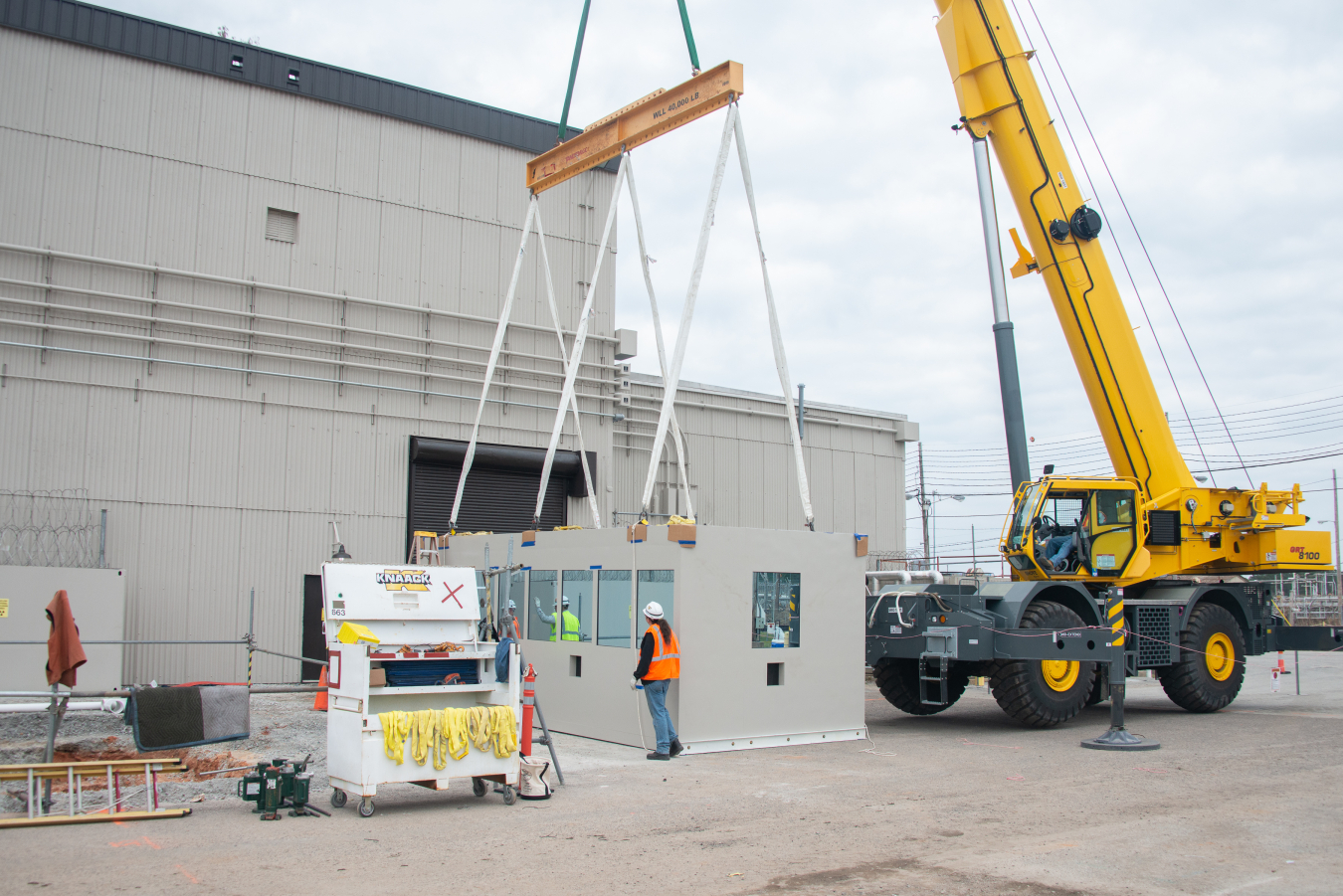A recently delivered Security Inspectors Operation Area, seen here being moved into the main production area in K Area, will allow remote inspections of employees working on the surplus plutonium disposition mission at the Savannah River Site.
Office of Environmental Management
May 2, 2023
A recently delivered Security Inspectors Operation Area, seen here being moved into the main production area in K Area, will allow remote inspections of employees working on the surplus plutonium disposition mission at the Savannah River Site.
AIKEN, S.C. – The EM program at the Savannah River Site (SRS) has received a critical piece of its expanded mission to downblend additional surplus plutonium for permanent disposal and remove it from the state of South Carolina.
A new modular building, referred to as the Security Inspectors Operation Area, has arrived at the site’s K Area Complex nuclear material management facility. The security building will be part of a new and larger Entry Control Facility used for remote inspection of employees by security officers.
The new additions are part of major ongoing infrastructure upgrades to support the site’s increased plutonium downblending operations.
Earlier this year, EM collaborated with the National Nuclear Security Administration at SRS to successfully complete the first shipment of downblended surplus plutonium for permanent disposal from the site’s K Area. The shipment from K Area to EM’s Waste Isolation Pilot Plant (WIPP) in New Mexico marked a momentous milestone culminating from multiple years of effort to prepare for and remove plutonium from South Carolina.
EM is preparing to add three new gloveboxes to the K Area facility. Gloveboxes are structures with ports containing gloves that allow employees to safely work with radioactive material.
The K Area Complex currently has one glovebox for downblending. Plutonium is downblended in the glovebox in a process that mixes plutonium oxide with a multicomponent adulterant to enable DOE to produce a proliferation-resistant form that can never again be readily used in nuclear weapons. The downblended material is packaged in drums and staged on a designated storage pad until it is characterized and ready to be shipped to WIPP.
The new Entry Control Facility will be much larger than the existing Entry Control Facility and includes innovative technology used across the DOE complex. The Security Inspectors Operation Area will have additional space for security officers to remotely process employees working in the existing and new glovebox rooms. The accelerated surplus plutonium disposition mission is estimated to result in three times as many employees entering the facility.
“Entering and exiting through controlled entry is necessary for safety and security, but it is cumbersome and takes some time,” said Leeanna Biery of K Area Complex Program and Project Integration. “The new Entry Control Facility will be much more efficient and greatly increase the throughput of personnel required to perform downblend activities in both the existing glovebox as well as the new glovebox rooms to be installed.”
The new Entry Control Facility is scheduled to be operational summer of 2024.
To receive the latest news and updates about the Office of Environmental Management, submit your e-mail address.

